News
_W_500.JPG)
11/03/2015
Sustainability: the Barcelona Synchrotron Park focuses on birds and bats…
Sustainability: the Barcelona Synchrotron Park focuses on birds and bats…
The Barcelona Synchrotron Park (BSP), also known locally as Parc de l’Alba, is a park designed for companies and for people.
On one hand, with 400,000 m2 of fully urbanised plots located around the ALBA synchrotron it aims at becoming a reference landing location in Europe for technology-based companies.
On the other hand, the BSP offers a residential area for 4,088 housing units, a commercial area and a large network of green areas that represent about half of the 340 hectares of the park.
BSP’s commitment to sustainability and quality of life includes a 152 hectares biologic corridor that contributes to connect the Collserola natural park (8,000 hectares) that surrounds Barcelona, with the Sant Llorenç de Munt natural park (13.700 hectares). In this green corridor, work has been carried out by the BSP to install shelters where small insectivorous birds and bats can make their nests. These animals help to control insect pests, and are a very useful tool in sustainable agriculture and gardening.
This work is part of a global action plan elaborated by the BSP in order to restore this biologic area, which includes planting of 3,000 trees and 43,000 shrubs, for a 2 million Euros investment to date.
More information
On one hand, with 400,000 m2 of fully urbanised plots located around the ALBA synchrotron it aims at becoming a reference landing location in Europe for technology-based companies.
On the other hand, the BSP offers a residential area for 4,088 housing units, a commercial area and a large network of green areas that represent about half of the 340 hectares of the park.
BSP’s commitment to sustainability and quality of life includes a 152 hectares biologic corridor that contributes to connect the Collserola natural park (8,000 hectares) that surrounds Barcelona, with the Sant Llorenç de Munt natural park (13.700 hectares). In this green corridor, work has been carried out by the BSP to install shelters where small insectivorous birds and bats can make their nests. These animals help to control insect pests, and are a very useful tool in sustainable agriculture and gardening.
This work is part of a global action plan elaborated by the BSP in order to restore this biologic area, which includes planting of 3,000 trees and 43,000 shrubs, for a 2 million Euros investment to date.
More information
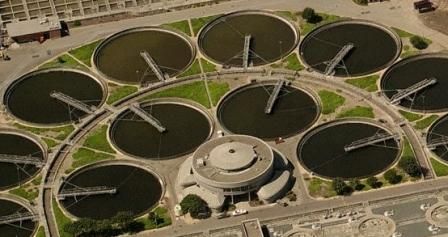
05/03/2015
Wastewater that produces green energy
Wastewater that produces green energy
Wastewater contains an elevated amount of chemical energy in the form of organic contaminants. In order to make use of this energy, researchers from around the world study ways to recover it in the form of hydrogen, a process which efficiently eliminates organic matter from wastewater. It not only reduces the amount of energy needed during the process, it also obtains energy from the produced hydrogen.
The key to achieve this is what is known as microbial electrolysis cells (MEC), a very special type of bacteria capable of generating electricity which in turn produces hydrogen.
At the UAB University that the Barcelona Synchrotron Park works with, Researchers from the Bioelectrochemistry group of the Department of Chemical Engineering have achieved to improve the energetic efficiency of the cells. The scientists, coordinated by professors Albert Guisasola and Juan Antonio Baeza, used real wastewater and achieved a biological production of hydrogen and, to a large extent, the recovery of a good part of the energy contained in the residues.
High hydrogen production and energy intensity were obtained through the wastewater treatment: these results are the basis for a potential industrial development of this technology and therefore for the creation of systems capable of producing hydrogen from wastewater treatment.
News based on the press release issued by the UAB.
The key to achieve this is what is known as microbial electrolysis cells (MEC), a very special type of bacteria capable of generating electricity which in turn produces hydrogen.
At the UAB University that the Barcelona Synchrotron Park works with, Researchers from the Bioelectrochemistry group of the Department of Chemical Engineering have achieved to improve the energetic efficiency of the cells. The scientists, coordinated by professors Albert Guisasola and Juan Antonio Baeza, used real wastewater and achieved a biological production of hydrogen and, to a large extent, the recovery of a good part of the energy contained in the residues.
High hydrogen production and energy intensity were obtained through the wastewater treatment: these results are the basis for a potential industrial development of this technology and therefore for the creation of systems capable of producing hydrogen from wastewater treatment.
News based on the press release issued by the UAB.
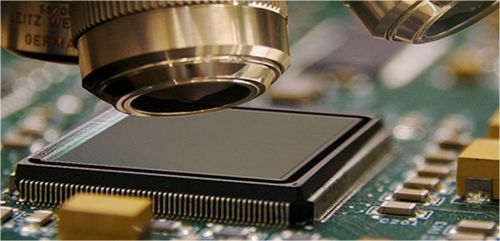
26/02/2015
ALBA, CSIC and Alibava develop an X-Ray detector
ALBA, CSIC and Alibava develop an X-Ray detector
A team of researchers and engineers of the ALBA Synchrotron has collaborated with members of the company Alibava Systems and the Institute of Microelectronics of Barcelona (IMB-CNM CSIC) to develop a radiation detector aimed at measuring the intensity of the beam with high precision when performing an experiment at a synchrotron facility. This new detector enables a correct development of the experiment, ensuring the quality of the obtained data and reducing the time of the experiment.
The collaboration between the ALBA Synchrotron and Alibava Systems, a spin-off company of the Spanish National Research Council (CSIC) located at the UAB Research Park, has been complemented with a license agreement that lets Alibava commercialise a product originated from research results of the synchrotron facility and the CSIC.
As of today, the device has been successfully tested at the ALBA Synchrotron and other synchrotron facilities, such as the European Synchrotron Radiation Facility (ESRF). It is expected to sell the first detectors in the following months to universities and synchrotron facilities and the responsible of the project estimate to sell about 50 devices per year.
News from the press release issued by the ALBA Synchrotron.
Image: Alibava
The collaboration between the ALBA Synchrotron and Alibava Systems, a spin-off company of the Spanish National Research Council (CSIC) located at the UAB Research Park, has been complemented with a license agreement that lets Alibava commercialise a product originated from research results of the synchrotron facility and the CSIC.
As of today, the device has been successfully tested at the ALBA Synchrotron and other synchrotron facilities, such as the European Synchrotron Radiation Facility (ESRF). It is expected to sell the first detectors in the following months to universities and synchrotron facilities and the responsible of the project estimate to sell about 50 devices per year.
News from the press release issued by the ALBA Synchrotron.
Image: Alibava
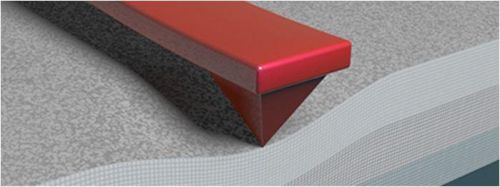
20/02/2015
The pressure that makes conductivity higher: new record in the ICN2
The pressure that makes conductivity higher: new record in the ICN2
Researchers from the Catalan Institute of Nanoscience and Nanotechnology (ICN2) the Barcelona synchrotron Park (BSP) works with, have measured, at room temperature, the highest values of piezoresistivity ever detected in an electroceramic material, overcoming the registers for materials such as silicon nanowires or graphene. Moreover, it was measured with a simple technique that avoids using complex equipment to control pressure.
The research has been conducted by Oxide Nanoelectronics Group, led by Prof ICREA Gustau Catalan. Dr Neus Domingo is the first signer of the article published in Nanoscale and her intervention has been essential for the development of the research.
Piezoresistivity happens when certain materials change their electric conductivity once submitted to a pressure deforming them.
In other words, when the material is pressed, there is better electricity conduction. This fact leads to a wide range of possible applications, from pressure sensors to microelectronic transistors where the current is controlled by pressure instead of voltage.
News based on the press release issued by the ICN2
Image: ICN2
The research has been conducted by Oxide Nanoelectronics Group, led by Prof ICREA Gustau Catalan. Dr Neus Domingo is the first signer of the article published in Nanoscale and her intervention has been essential for the development of the research.
Piezoresistivity happens when certain materials change their electric conductivity once submitted to a pressure deforming them.
In other words, when the material is pressed, there is better electricity conduction. This fact leads to a wide range of possible applications, from pressure sensors to microelectronic transistors where the current is controlled by pressure instead of voltage.
News based on the press release issued by the ICN2
Image: ICN2
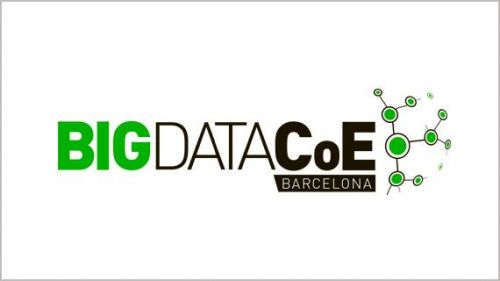
11/02/2015
Presentation of the Big Data CoE Barcelona initiative
Presentation of the Big Data CoE Barcelona initiative
The new Big Data CoE (Centre of Excellence) – Barcelona initiative was presented on last February 9. This project promoted by Barcelona Digital, Oracle, the government of Catalonia and the City Council of Barcelona, aims at giving companies and institutions innovative technological solutions to their growing needs for data management and use.
The Big Data CoE Barcelona will provide companies with services, expertise and knowhow to design and execute their big data strategies.
The Barcelona Synchrotron Park (BSP) attended the presentation of this initiative sponsored by Oracle that already works with the CaixaBank Spanish leading financial group in order to implement its new big data infrastructure located in its Data Centre set up in the BSP.
The Big Data CoE Barcelona initiative will give the city a new important asset to attract new ICT players, especially companies that look for high standard locations to construct Data Centres such as those the BSP offers and where CaixaBank, IBM or T-Systems are already settled in.
The Big Data CoE Barcelona will provide companies with services, expertise and knowhow to design and execute their big data strategies.
The Barcelona Synchrotron Park (BSP) attended the presentation of this initiative sponsored by Oracle that already works with the CaixaBank Spanish leading financial group in order to implement its new big data infrastructure located in its Data Centre set up in the BSP.
The Big Data CoE Barcelona initiative will give the city a new important asset to attract new ICT players, especially companies that look for high standard locations to construct Data Centres such as those the BSP offers and where CaixaBank, IBM or T-Systems are already settled in.
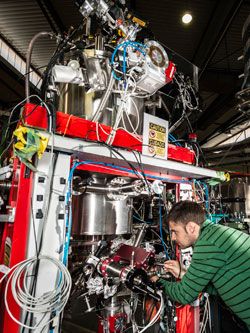
06/02/2015
Come investigate at the ALBA synchrotron: 2015 new call for proposals
Come investigate at the ALBA synchrotron: 2015 new call for proposals
Researchers from all over the world that aim at using the ALBA synchrotron for their investigations during the second half of 2015 can send their proposal by February 23.
Scientists, whose projects will be selected provided that results are published in the public domain, will enjoy the benefit of a free access to ALBA, the Barcelona Synchrotron Park emblematic scientific facility.
More information
Image: ALBA synchrotron
Scientists, whose projects will be selected provided that results are published in the public domain, will enjoy the benefit of a free access to ALBA, the Barcelona Synchrotron Park emblematic scientific facility.
More information
Image: ALBA synchrotron









